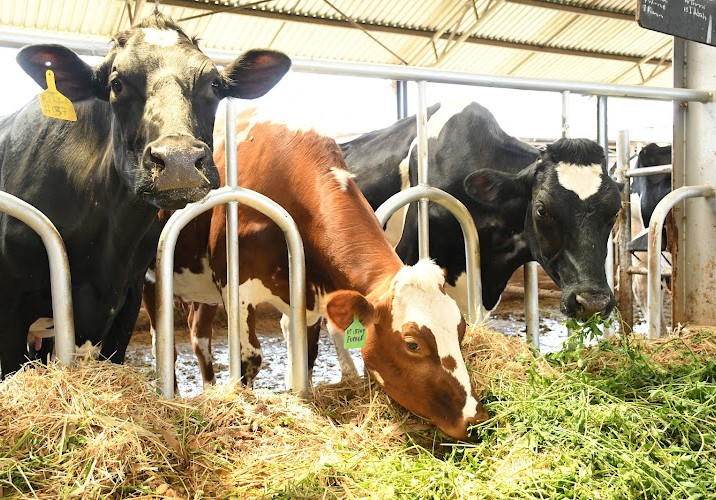The National Government has embarked on an ambitious training program, that will see livestock farmers in Kiambu receive field training during demonstration farm tours and also through telephone conversations, to increase milk production.
Kiambu Sub-County Livestock Production Office, has been helping dairy farmers with the new technology, especially on feeding and minimizing production costs.
Speaking to KNA, on Tuesday, Kiambu Sub-county Livestock Production Officer, Virginia Karanja, said farmers have been advised to plant high-value fodder crops such as Bracharia and desmodium, which when cultivated together with Napier grass, add protein value hence leading to more milk production.
She noted that 80 per cent of residents of Kiambu are dairy farmers,with most homesteads having two to three cows.
“Most of them who practice zero grazing due to small pieces of land, rear dairy cattle of Friesian and Ayrshire breeds for the vast production in milk and manure, but we are urging them to learn new techniques of improving their dairy production,” she said.
Kiambu County is one of the highest milk producers in the country, with 430 million litres annually. The mean production per cow every day in the country stands at 10.1 litres and Kiambu has been registering a production of 12.6 litres per cow.
Esther Njeri, a dairy farmer said “Since I started dairy farming, I’ve been keeping the Friesians cows as they have more milk compared to the other breeds. I started way back in 2006 and so far I can say dairy farming pays, I can sell my milk and also sell calves when necessary.”
She acknowledged the training but said that they need more extension officers to address most of the problems they encounter. Sometimes we go for long without the officers to assist us and we second-guess in tending to our livestock,” she said.
Njeri added that farmers already have ready milk markets in Ndumberi Dairy Farmers’ Cooperative, where they sell, they also hawk to small traders and some farmers sell their milk in Nairobi, which has been made possible due to the proximity to town.
According to Ms Karanja, the standard cost of milk in the Kiambu Sub-county is Sh47 to Sh50 per litre.
“Selling the milk in its raw form normally does not fetch good money and that is the reason we encourage the farmers to sell to the cooperatives that value-add the milk, by processing it into yoghurt, pasteurized milk and other dairy products,” Ms Karanja said.
She explained that to build farmers capacity, the Agriculture Sector Development Support Programme (ASDSP), a programme from the National government in dairy, banana and chicken farming, did some research and found gaps that made the farmers not get good profit from their cattle and thus the introduction of new technologies, as well as training the extension officers, who go to the ground and help the farmers.
George Ngugi, another farmer from Ndumberi, said that the biggest challenge they grapple with as dairy farmers is the cost of Artificial Insemination (AI) services.
“We pay a lot for the services which range from Sh1500 to Sh 2,000, commercial feeds are also currently high and getting grass and other feeds is a challenge because of the small spaces in our land. It would be of great help if the government would intervene to help lessen these costs,” Ngugi said
The Kenya Agricultural Livestock and Research Organization (KALRO)’s Arid and Rangeland Research Institute (ARRI) Director, Dr Simon Kuria, told KNA that they have been training farmers and taking them through a whole production cycle of fodder crops, starting from a lot of preparation, the sowing itself, weeding management, the harvesting stage, conservation of the feed material, feeding the animal, up to developing business cases around the fodder production for use by the farmers.
“Feed is an important part of cattle health and has a substantial impact on yield; poor access to concentrate feed and fodder, as well as poor feeding regimens, mean that most cattle are not reaching their highest productivity potential,” he said during an interview.
Dr. Kuria said that the high-yield and fast-growing grass variety is therefore being viewed as an alternative to providing both fodder for livestock and revenue for farmers.
By Treezer Leah




